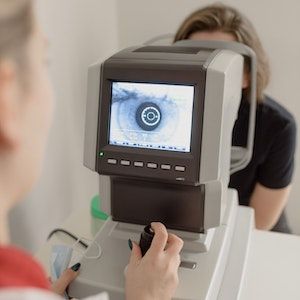Article
Single-Nucleotide Polymorphisms Associated with Anti-VEGF Therapy Response
Author(s):
New research shows 9 SNPs of 4 genes were significantly associated with the anti-VEGF therapy response in patients with age-related macular degeneration.

Improvement in the understanding of the pathogenesis of age-related macular degeneration (AMD) has shown the essential role of vascular endothelial growth factor (VEGF) in the progression of the disease.
Although the role of anti-VEGF therapy has been shown to improve visual acuity in a patient with wet AMD, variation in treatment response may be due to genetic polymorphisms in the patient population.
Investigators, led by Guangming Jin MD, PhD, State Key Laboratory of Ophthalmology Zhongshan Ophthalmic Center, Sun Yat-sen University, identified 9 single-nucleotide polymorphisms (SNP) of 4 genes had significant association with anti-VEGF therapy response in patients with AMD.
Methods
Investigators retrieved studies through the Embase, PubMed, and Web of Science databases in English and the China National Knowledge Infrastructure, WanFang and VIP databases in Chinese for pharmacogenetics studies on anti-VEGF therapy response through April 2021.
Inclusion criteria included an original case-control study evaluating the association between anti-VEGF therapy outcome and gene polymorphisms in patients with neovascular AMD, a certain number of cases met requirement of statistical power, and genotype or allele frequencies provided to estimate odds ratio (OR) at a 95% confidence interval (CI).
The team defined a patient as responsive to therapy through criteria, including best-correct VA improvement (gaining vision acuity of ≥5 letters in the ETDRS chart, <30% of baseline letters), optical coherence tomography (OCT) improvement (absence of subretinal or intraretinal fluid, increase in central retinal thickness of <100 μm, or total retinal thickness change ≥75th percentile), or fluroescein angiography (FA) improvement.
Follow-up took place from 1 month to 2 years.
Results
After the search, a total of 10,468 records were identified in the literature search, with 33 records eligible for inclusion in the meta-analysis.
The analysis determined the association between gene polymorphism and anti-VEGF therapy in 9 SNPs in 4 genes, showing statistically significant associations.
The team found rs1120063 in the HTRA1 gene (G versus A: OR = 1.518 (95%CI 1.038–2.219), P = 0.031), rs10490924 in the age- related maculopathy susceptibility (ARMS2) gene (G versus T: OR = 1.517 (95% CI 1.191–1.931), P = 0.001), rs1061170 in the complement factor H (CFH) gene (TC versus CC: OR = 1.415 (95% CI 1.045–1.915), P = 0.025), and rs323085 in the OR52B4 gene (CC versus TT: OR = 15.423 (95% CI 1.378–172.677), P = 0.026) had associations with good anti-VEGF therapy responses.
In addition, rs800292 (GG versus AA: OR = 0.594 (95% CI 0.380–0.930), P = 0.023), rs1410996 (GA versus AA: OR = 0.497 (95%CI 0.274–0.902), P = 0.021) and rs1329428 (CT versus TT: OR = 0.423 (95%CI 0.237–0.754), P = 0.004) in the CFH gene, and rs4910623 (G versus A: OR = 0.241 (95% CI 0.065–0.896), P = 0.034) and rs10158937 (CT versus TT: OR = 0.491 (95% CI 0.255–0.944), P = 0.033) in the OR52B4 gene had associations with poor anti-VEGF therapy response in the patients with AMD.
Conclusion
Investigators noted limitations in the study included publication bias on some of the SNP studies which may have affected accuracy.
In addition, mitochondrial haplogroups, miRNA, DNA methylation, and histone modification mat have a role in the pathogenesis of AMD, which may have influenced the effects of anti-VEGF therapy for AMD.
“However, because of the lack of clinical data reported by case–control studies on the effects of epigenetics on anti-VEGF treatment response, future research should be conducted to reveal associations between epigenetics and anti-VEGF therapy response,” investigators wrote.
The study, “Genetic associations of anti-vascular endothelial growth factor therapy response in age-related macular degeneration: a systematic review and meta-analysis,” was published online in Acta Ophthalmologica.





